Let’s start treating waste water as a product to recycle

In Singapore, when you flush the toilet, its contents are sent swimming to one of five NEWater water reclamation plants. Here, sewage is filtered and cleaned before being recycled directly back to taps as drinking water. To Singaporeans, it’s a well-accepted part of everyday life.
Many of the Earth’s resources are finite. This article describes how today waste water treatment is not just about removing contamination but is also about the recovery of valuable resources. It provides examples to illustrate many of the concepts in the Earth and atmospheric science unit from the GCSE subject content and will be perfect to stimulate discussion on the impact science can have on saving our resources.
In the UK, we’re still somewhat squeamish about the contents of our toilet bowls being recycled. Sewage is more commonly viewed as a waste stream than a water resource. Rachel Gomes, a water treatment expert at the University of Nottingham, explains how the process traditionally works. While there isn’t a one-size-fits-all approach, there are generally three stages to waste water treatment, she says. The overall process treats toilet water and water from other home uses, such as showers, together with water from outdoor drains.
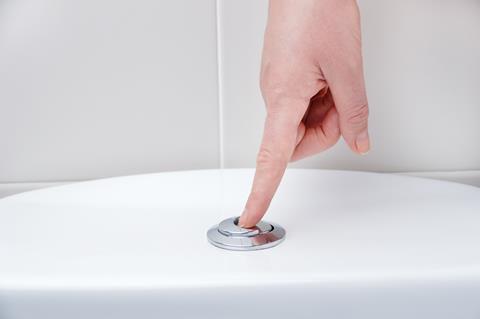
The first stage is preliminary screening, aimed at fishing out large pieces of waste – everything from face wipes to family pets. The next stage is primary treatment, which relies on gravity to let solid particles settle out of the liquid portion, forming a sludge that can be used to fertilise fields. One of the main goals of primary treatment is to reduce the organic components in the water, measured as biological oxygen demand (BOD). BOD is reduced by around a third during this stage.
The final stage is what Rachel calls the ‘heart’ of the waste water treatment plant. In this secondary treatment phase, microbes get to work on breaking down all the unsavoury stuff that is left in the water and that needs to be removed before it can be considered clean enough to return to a river or the sea. Rachel says: ‘The microorganisms are using that waste water. They’re cleaning it up because they’re using the pollutants in there as a food source.’ They thrive on simple chemicals, such as small carbon-containing molecules, phosphorus and nitrates, but they also consume a lot of oxygen. This is why it helps to lower the BOD – the ‘demand’ for oxygen – by settling out some of the organic matter missed in the primary treatment.
What’s unconventional about the Singaporean system is that it involves a third (tertiary) treatment phase. Similar approaches are being adopted in Australia and parts of the US where drought is leaving reservoirs and rivers running low. Tertiary treatments include ultra-fine filters and additional chemical treatments to bring the reclaimed water up to the more stringent standards required for drinking water.
Ebb and flow
However, even water that goes back to the river has to meet strict quality standards. Water companies must keep certain chemicals below set levels and monitor others. One group of chemicals that is under close scrutiny is medicines, including synthetic hormones such as the oestrogen-like compounds used in contraceptive pills, which have been shown to have feminising effects on male fish. The EU plans to introduce legislation to reduce the levels of these chemicals in the water leaving treatment works, but the water industry is still searching for economical ways of dealing with them. Rachel says: ‘There are a couple of technologies that would do it but the cost of them is so prohibitive that [water companies] would go bankrupt.’ New technologies for water treatment also need to be thoroughly tested to make sure they don’t produce harmful by-products.
Nowadays, though, water treatment is not just removing contamination. It can also be about recovery. As already happens in Singapore, water companies are viewing waste water less as waste and more as a valuable resource.
From toilet to tap
Worksheets, age range 14-16
In these differentiated worksheets students are encouraged to develop their literacy skills using DARTs (Directed Activities Related to Text). Based on their reading, the students are asked to consider if they would be happy to drink water recycled from the contents of a toilet flush. This should result in a lively classroom debate!
Download the worksheet for low attainers as MS Word or pdf and for high attainers as MS Word or pdf.
Download the worksheets from the Education in Chemistry website: rsc.li/2GcZ7jU
River recovery
At Stoke Bardolph waste water treatment works near Nottingham, Severn Trent Water uses special reactors to generate methane biogas and recover the nutrient phosphorus. As Peter Vale, the company’s technical lead for innovation, explains: ‘We use a biological process to take phosphorus out of the water and store it in the sludge. The sludge is anaerobically digested [without oxygen], generating methane, which we use to generate electricity.’ The phosphorus is then recovered from the sludge as a chemical called struvite. By law, phosphorus levels in the water leaving water treatment plants must be kept low because of its damaging effects on wildlife – it causes too much algae to grow and reduces oxygen levels. It is usually removed by a chemical process involving iron or aluminium, but this new biological process involving bacteria is greener. Recovering the phosphorus to sell to fertiliser companies or adding it to the sludge that is spread on farmers’ fields also means we rely less on imports of mined phosphorus from abroad.
According to Peter, Severn Trent Water is now testing methods for recovering other products, including nitrogen and cellulose, at a demonstration plant in Redditch, and is involved in research on recovering plastics.
With the right processes, high-value metals such as copper could also be recovered from waste water. Rachel even speculates about the possibility of recovering medicines. She says: ‘It’s about waste to wealth. A lot of things that we perceive to be pollutants are actually products.’ And while we might not be ready for the Singaporean system of sewage recycling just yet, we’re certainly looking at what we flush down the toilet in a more positive light.
More recommended resources
In Search of Solutions: Water for survival – Use this resource to develop your students’ problem-solving skills and apply their knowledge of separating techniques to create a sample of drinking water from the contents of a muddy pond.
Creative Problem Solving in Chemistry: The life raft – Students evaluate the advantages and disadvantages of a selection of resins and decide which would be best for producing pure water from sea water on a life raft.
TiO2 photocatalysis – With this collection of resources students can investigate how using titanium dioxide as a photocatalyst can help to create cleaner water using sunlight.
In Search of Solutions: Water for survival – rsc.li/2KsjlKK
Use this resource to develop your students’ problem-solving skills and apply their knowledge of separating techniques to create a sample of drinking water from the contents of a muddy pond.
Creative Problem Solving in Chemistry: The life raft – rsc.li/2uUAylz
Students evaluate the advantages and disadvantages of a selection of resins and decide which would be best for producing pure water from sea water on a life raft.
TiO2 photocatalysis – rsc.li/2uZkxKQ
In this collection of resources students can investigate how using titanium dioxide as a photocatalyst can help to create cleaner water.
Article by Hayley Bennett, a science writer based in Bristol. Resource by Catherine Smith, a secondary school teacher in Leicestershire
Downloads
From toilet to tap (low attainers resource)
Word, Size 0.22 mbFrom toilet to tap (low attainers resource)
PDF, Size 0.1 mbFrom toilet to tap (high attainers resource)
Word, Size 0.23 mbFrom toilet to tap (high attainers resource)
PDF, Size 0.16 mb
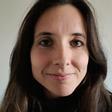
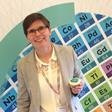





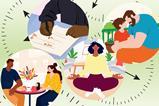
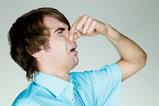
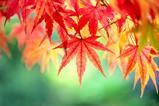









No comments yet